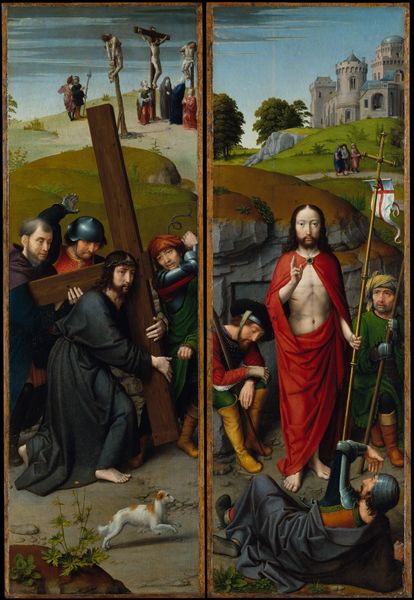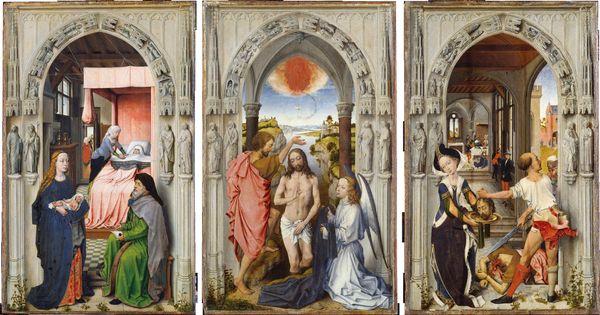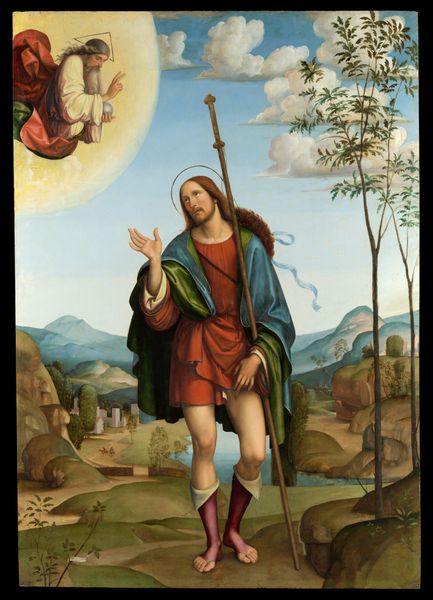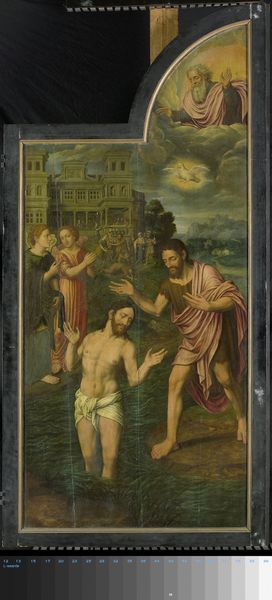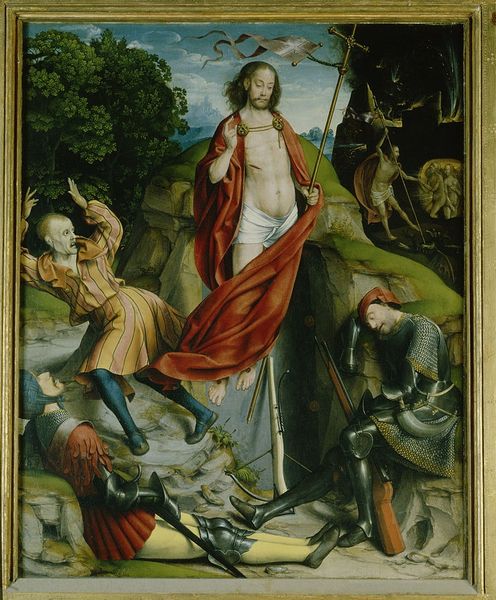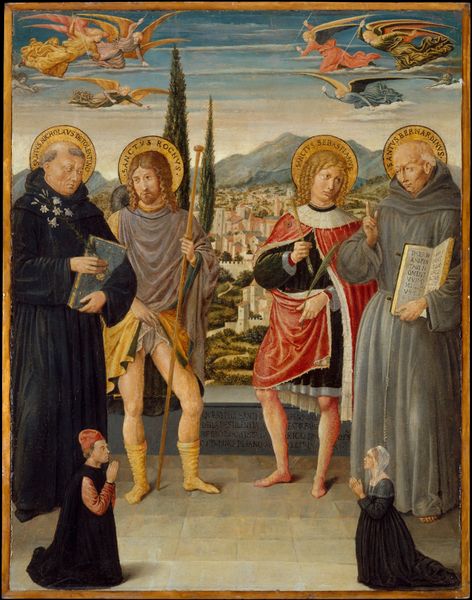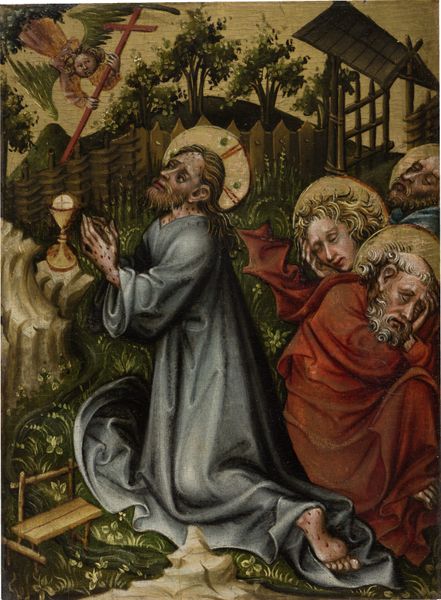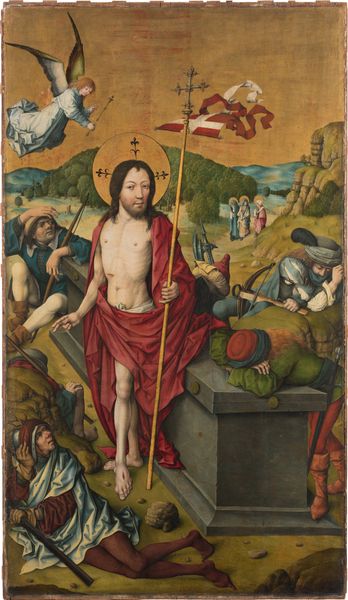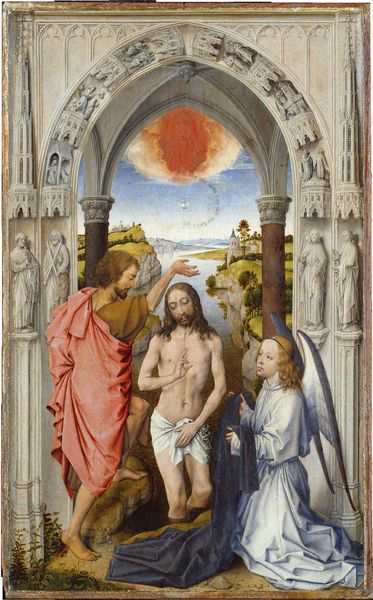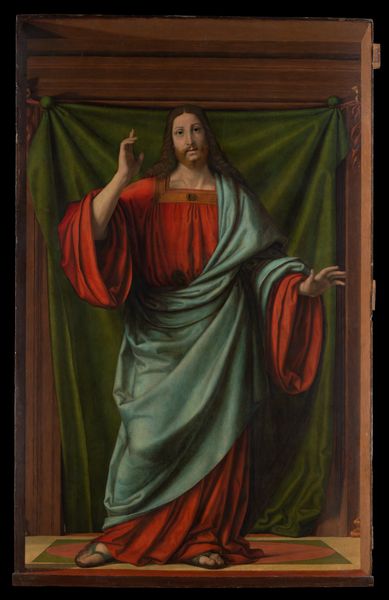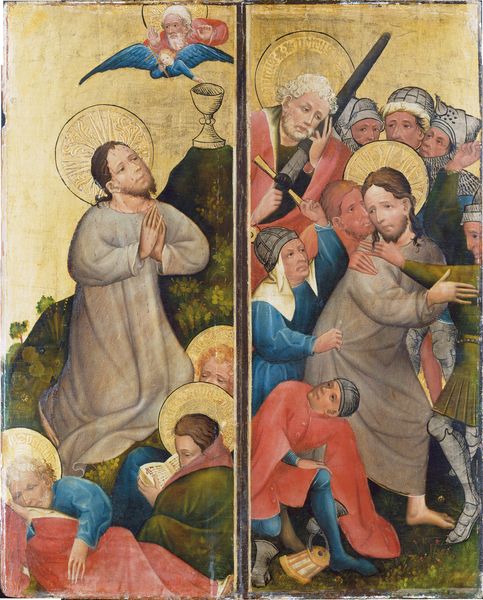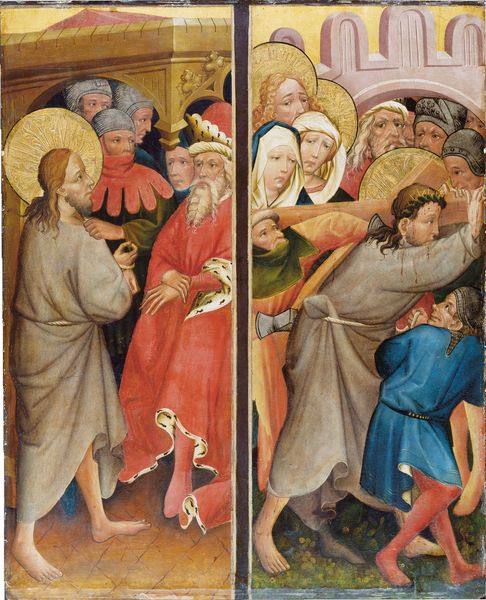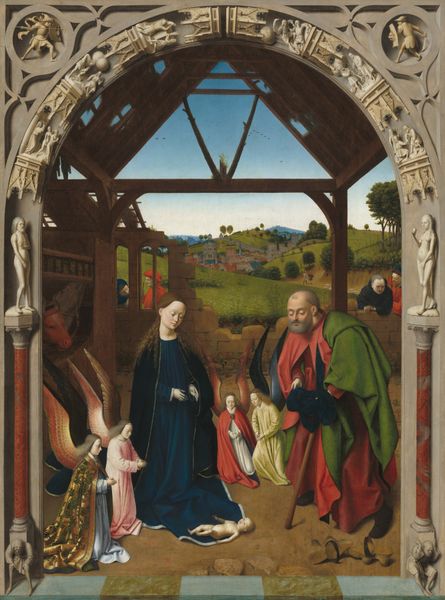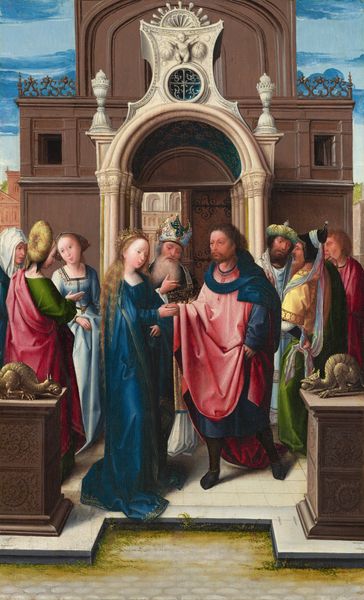
Saint John the Baptist; Saint Francis Receiving the Stigmata 1485 - 1490
0:00
0:00
painting, oil-paint
#
portrait
#
painting
#
oil-paint
#
oil painting
#
history-painting
#
italian-renaissance
#
portrait art
Dimensions: Left wing, overall 18 x 6 5/8 in. (45.7 x 16.8 cm), original painted surface 17 5/8 x 5 7/8 in. (44.8 x 14.9 cm); right wing, overall 17 7/8 x 6 1/2 in. (45.4 x 16.5 cm), original painted surface 17 5/8 x 5 3/4 in. (44.8 x 14.6 cm)
Copyright: Public Domain
Curator: On display before us, we have Gerard David’s diptych "Saint John the Baptist; Saint Francis Receiving the Stigmata," dating from around 1485 to 1490. David rendered this piece with oil paints. Editor: Immediately, the division into two distinct scenes is striking. On one side, a serene figure with a lamb, bathed in gentle light, and on the other, a dramatic scene of divine visitation and anguish. The contrast is palpable. Curator: Absolutely. The medium of oil allows for incredibly smooth gradations of light and shadow, which is key to the artwork's devotional nature and realism. How do you think David's choice of oil paint enhanced its reception in its time? Editor: The oil allows the work to focus primarily on surface and texture: The velvety texture of the robe of Saint John and the wool of the lamb practically invites the viewer’s touch. The texture feels palpable. The artist’s careful attention to detail and surface contributes to a larger semantic meaning in the artwork, with details like light, color, or position hinting to divine meanings. Curator: Yes, it seems you're drawing the relationship between process and cultural relevance. David, known for his workshop efficiency, had specific oil paint recipes allowing layers, but there may have been apprentices applying base coats or backgrounds; he also created art within specific guild parameters in Bruges. What’s striking about this is not only that David created this work, but the process through which it could exist within late fifteenth-century society. Editor: I do concede, understanding production informs context, however, without formal components of style such as contrast of colors, symbolic composition and form, the material processes hold less significance. Ultimately, it’s a potent fusion, both of artistic mastery and craft meeting consumer and the demand of spiritual art during the era. Curator: Indeed. Analyzing the intricate blend of skill, patronage, and religious climate allows us to think about art history. Editor: It has offered an approach that appreciates the multilayered ways artwork attains meaning over time.
Comments
No comments
Be the first to comment and join the conversation on the ultimate creative platform.
